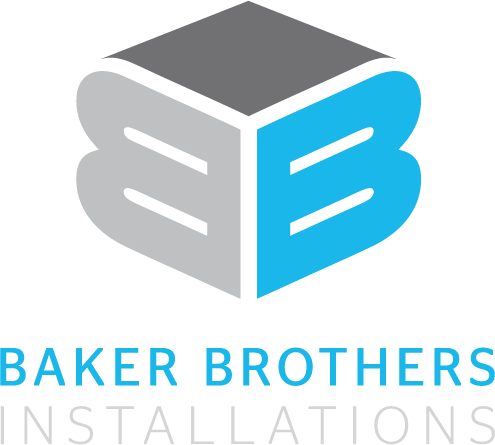What Facility Managers Need to Know About Steel Tariffs and Their Impact on Warehouse Racking Costs
As an operations manager, facilities director, or industrial engineer, you’re constantly looking for ways to optimize warehouse efficiency, control costs, and ensure smooth operations. This year, however, new steel tariffs may make that task more challenging. At Baker Brothers Installations, we’re here to help your facility navigate the year ahead.
Recent policy changes are driving up steel import tariffs, which could significantly impact the cost of warehouse racking, a critical component of warehouse and distribution center infrastructure. If your facility requires new racking solutions this year, you may face longer lead times, rising costs, and supply chain constraints. In this article, we’ll break down how new steel tariffs will affect your bottom line and, more importantly, how to mitigate the impact.
Steel Tariffs: What’s Happening Now?
In January 2025, President Donald Trump announced broad tariffs on imported steel, aluminum, copper, semiconductors, and pharmaceuticals. The goal is to boost domestic production, but economists warn that tariffs could also lead to increased costs for businesses that rely on steel imports, including those in the warehousing and distribution industry.
What warehouse facilities and operations managers need to know:
- New steel import tariffs will likely increase the price of warehouse racking systems.
- A universal tariff of 2.5% on all imports is under discussion, with expectations of even higher rates.
- Domestic steel producers may see increased demand, potentially raising prices further and extending lead times.
These policies mirror past steel tariffs, such as those imposed by President Trump in 2018, which drove up domestic steel prices and increased costs for industries that rely on steel-based materials.
What This Means for Warehouse Racking Costs
Prior to the transition to the new administration, industry experts were predicting a slight decline in steel prices in 2025, a prediction that is all but obsolete under the second Trump administration. If you’re planning to expand, reorganize, or upgrade your warehouse racking system, these tariffs could significantly increase your project costs.
Historically, warehouse racking tariffs have fluctuated based on steel imports and domestic demand. Here’s what you need to know:
- Steel prices make up 60-70% of racking system costs.
- Selective pallet racks have ranged from $20-$25 per pallet position, while structural racks cost $30-$35 per pallet position in recent years.
- The historic price of warehouse racking shows direct correlations with steel market volatility, meaning new tariffs will likely drive prices higher.
If you rely on steel drive-in racks, pushback racks, or cantilever racks, expect price increases across the board.
Strategies to Mitigate Rising Warehouse Racking Costs
While warehouse racking tariffs may drive costs up, there are ways to keep expenses under control. Consider these proactive steps to protect your bottom line:
1. Lock in Pricing Now
Steel tariffs are expected to drive costs up gradually, meaning there’s still time to purchase warehouse racking at current prices before increases take full effect. Consider buying in bulk to save even more.
2. Buy Used Racking
Pre-owned warehouse racking systems are often 40-60% cheaper than new racking and are readily available without manufacturer lead times. Baker Brothers Installations offers pre-owned racking at deep discounts. We inspect all pre-owned assets completely before purchase, ensuring that any used racking systems we sell meet safety standards.
3. Explore Alternative Storage Solutions
Rather than relying solely on traditional steel pallet racking, explore alternative storage solutions that reduce steel reliance or improve space efficiency. Materials like aluminum, composite, or other lighter metals are not subject to steel tariffs. Although they may have lesser load capacity, they may be an acceptable alternative in some warehousing situations. Also consider high-density racking, dynamic storage systems, or automated retrieval systems (AS/RS) that require less steel per square foot of storage.
4. Extend the Life of Your Existing Racking
Instead of replacing racking systems, enhance and reinforce your current setup. Inspect existing racking for damage and invest in reinforcements, rack protection systems, and seismic bracing to extend lifespan.
5. Maximize Existing Warehouse Space
By reconfiguring your warehouse layout, you can increase storage capacity without adding new racking. Work with warehouse design experts like Baker Brothers to optimize aisle spacing, picking paths, and mezzanine storage before investing in new racks.
6. Monitor Market Trends
Steel prices fluctuate, and tariffs may be altered depending on economic and trade conditions. Stay up to date on steel import policies and tariffs and plan to time your racking purchases strategically.
Need a Racking Solution Before Prices Go Up?
With steel tariffs poised to impact racking costs and warehouse budgets, facilities managers and industrial engineers must plan ahead to mitigate price increases.
If you’re considering a warehouse racking upgrade, now is the best time to act. Baker Brothers Installations provides full-service warehouse racking design, procurement, and installation (including detailed labeling services) to keep your facility running smoothly at a fair price. To discuss cost-effective racking options and get ahead of price increases, contact us today.

